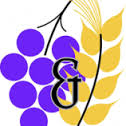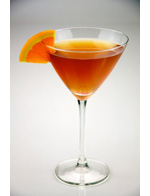Category: Brandy Education

David on Technical Topics – Hermitage, A Fine Brand of Cognac
The other day we were discussing our corporate logo and I was wondering how many people have actually looked at it and studied its design? The use of company logos by many organisations is really to distinguish themselves from other similar names or businesses. In our case we have set out to achieve rather more than this as our logo represents a guarantee of quality. To understand this better we need to look at what each element of the logo represents. The Hermitage Cognacs logo is based on some of the important features of the cognac industry. In the middle… Read more

Is Cognac Better Than Whisky?
An impossible question to answer, it is of course down to personal taste, but we do have a few facts to consider. Cognac is made from grapes and whisky from grain so cognac can develop a variety of fruitful aromas and flavours which whisky cannot. Both spirits are aged in barrels and improve over time but cognac is the more complex, takes longer to produce and inevitably, is more expensive. Additionally, it is double distilled and must be made in accordance with strict regulations. Whisky can be produced anywhere in the world but cognac must come from the designated Cognac… Read more

David on Technical Topics – Cognac Grape Varieties
Most people regard the Ugni Blanc as the cognac grape variety but there are in fact 8 different varieties allowed in the production of cognac. The Ugni Blanc is also known as the St Emillion des Charente, but the Colombard, Folle Blanche, Jurançon, Blanc Ramé, Bouilleaux, Belzac Blanc and Chalosse grapes are also permitted. More than 95% of all cognacs are made from the Ugni Blanc which was originally an Italian variety called Trebbiano Toscano, from the foothills of the Emilia Romagna near Piacenza. It is regarded by many as being so widely used that it probably produces more wine… Read more

David on Technical Topics – Cognac Vines
Having spent a very cold weekend in the garden pruning trees, shrubs and roses, I gave some thought to those people who have to be in the cognac vineyards at this time of the year pruning the vines. In theory, there is no reason why the vines cannot be pruned as soon as the leaves have died back but at that time of the year, distillation is in full swing so lack of time prevents it. Most of the distillations have been completed by the New Year and it is then that the work outside begins in order that new… Read more

Victorian Cognac Cocktails
Perhaps because we tend to think of cognac as the venerable grandfather of luxury spirits, the image of mixing it with anything which may contaminate its qualities has isolated it to the peak of individualism – only to be enjoyed by a certain type of aged gentleman, usually smoking a large cigar. On the other hand, perhaps we should thank the big cognac brands who, because of over selling the golden nectar to the Asian markets, are now forced to produce over sugared and caramelised young cognacs which are more readily accepted as suitable for cocktails. During the mid-nineteenth century… Read more

David on Technical Topics – The Effect of Barrels on The Ageing Process
As the New Year rolls in the cognac distillers will be checking the ‘chais’ (cellars) and their existing stocks of cognac in barrels from previous years. Of course there are hundreds of old cellars all over the Cognac region, each containing large quantities of barrels in a range of sizes, the most common being 350 litres. Each barrel will have its own characteristics and will impart slightly different qualities into the cognac. This ageing process begins annually after distillation, which must be completed by 31 March. To provide an initial boost the newly distilled spirit is put into new oak… Read more

David on Technical Topics – How to Buy Cognac as a Gift
“Christmas” we say with a sigh of disbelief, we have only just recovered from the last annual triumph of food and drink only to be confronted with identifying that special and very personal present for the person in our lives who means so much to us. This year, they say Christmas is for sharing, it is the 2014 theme for retailers so I thought I would share some trade thoughts with you, our unique and individual customers. Cognac has always been a favourite of ageing fathers and grandfathers, I know, I fit the category myself, but did you know that… Read more

David on Technical Topics – The Age of Cognac
I am not too sure that I should be writing about age as I have just had a rather significant birthday but I wanted to answer some of the questions that regularly come up about a cognac’s age. Many people ask me “what is the age of my VSOP or XO cognac” and the answer is that unless it is stated on the bottle, I simply do not know. I can tell you what the minimum age should be – a VSOP must be at least 4 years old and an XO, a minimum of 6 years old. However, these products… Read more

David on Technical Topics – How to Taste Cognac
The brandy balloon glass is certainly an attractive and traditional way to drink cognac and it is probably the image we most associate with it. However, it is far from ideal because the surface area of the cognac in the glass is too large thereby allowing too much spirit to escape from the drink. This spirit remains in the glass and blinds the aroma of the cognac. The best glass to use is a smallish tulip shaped one. It should be filled to about a third full and then rotated gently so that the cognac comes into contact with the… Read more

David on Technical Topics – Keeping Cognac
We are often asked how long you can keep a bottle of cognac once it has been opened and the answer is for quite a long time – provided the bottle is stored upright and the cork replaced firmly every time you take some out. Cognacs deteriorate in the bottle over time for many reasons, the most common being that the bottle has been stored lying down. Strong spirit affects the cork to a far greater extent than wine does stored in the same position; this action compromises the flavour and allows air into the bottle. The more air there… Read more
